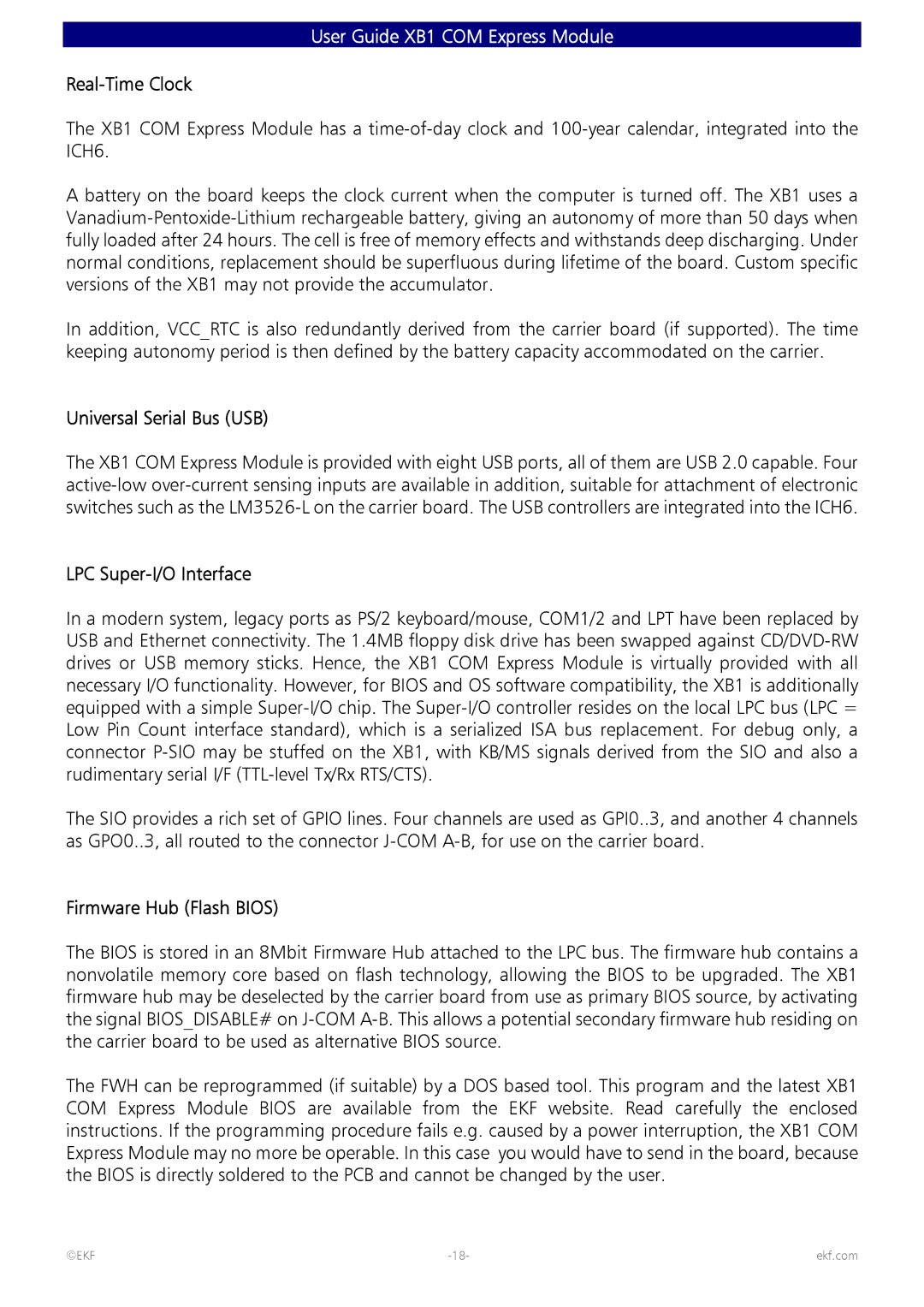User Guide XB1 COM Express Module
Real-Time Clock
The XB1 COM Express Module has a
A battery on the board keeps the clock current when the computer is turned off. The XB1 uses a
In addition, VCC_RTC is also redundantly derived from the carrier board (if supported). The time keeping autonomy period is then defined by the battery capacity accommodated on the carrier.
Universal Serial Bus (USB)
The XB1 COM Express Module is provided with eight USB ports, all of them are USB 2.0 capable. Four
LPC Super-I/O Interface
In a modern system, legacy ports as PS/2 keyboard/mouse, COM1/2 and LPT have been replaced by USB and Ethernet connectivity. The 1.4MB floppy disk drive has been swapped against
The SIO provides a rich set of GPIO lines. Four channels are used as GPI0..3, and another 4 channels as GPO0..3, all routed to the connector
Firmware Hub (Flash BIOS)
The BIOS is stored in an 8Mbit Firmware Hub attached to the LPC bus. The firmware hub contains a nonvolatile memory core based on flash technology, allowing the BIOS to be upgraded. The XB1 firmware hub may be deselected by the carrier board from use as primary BIOS source, by activating the signal BIOS_DISABLE# on
The FWH can be reprogrammed (if suitable) by a DOS based tool. This program and the latest XB1 COM Express Module BIOS are available from the EKF website. Read carefully the enclosed instructions. If the programming procedure fails e.g. caused by a power interruption, the XB1 COM Express Module may no more be operable. In this case you would have to send in the board, because the BIOS is directly soldered to the PCB and cannot be changed by the user.
©EKF | ekf.com |
